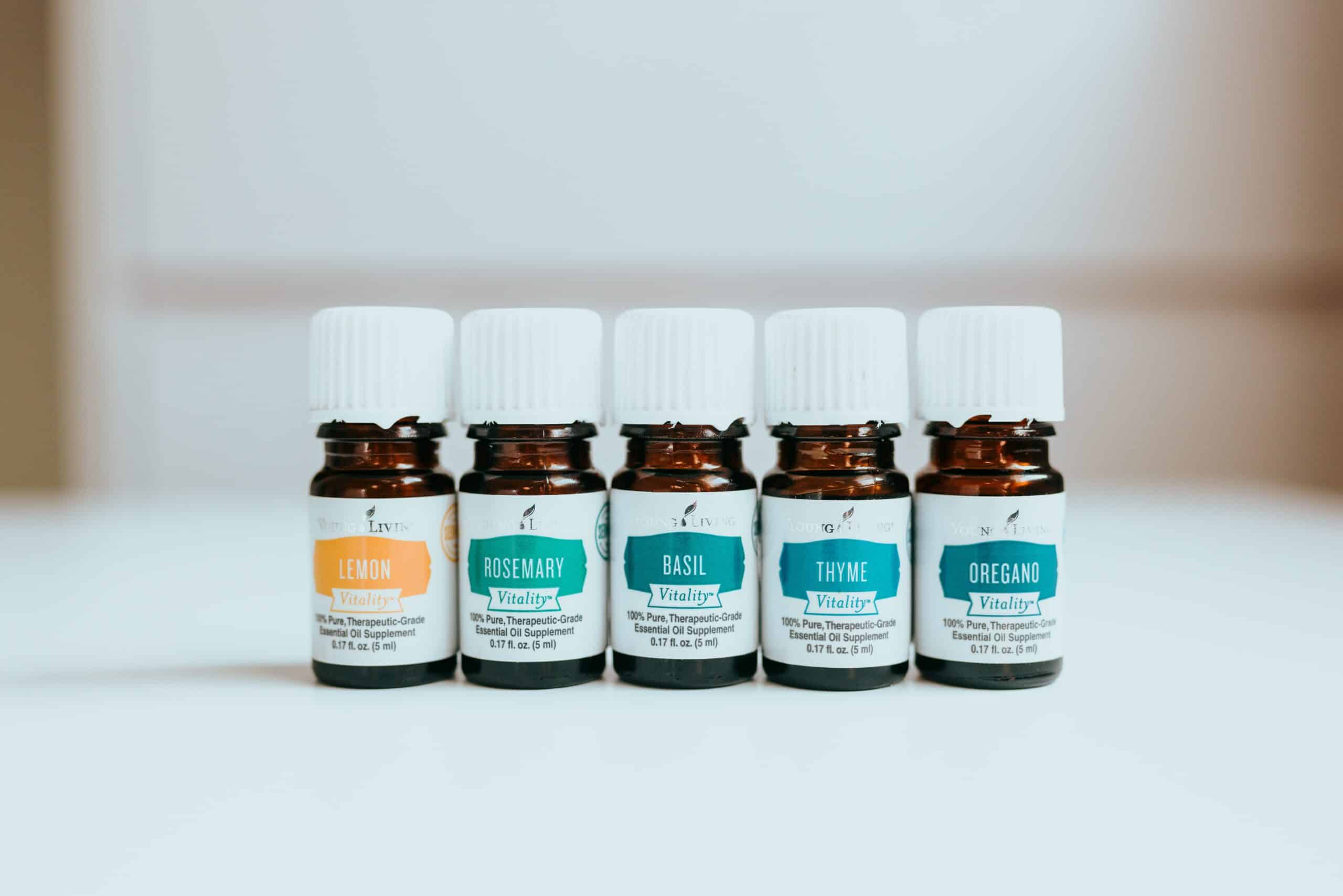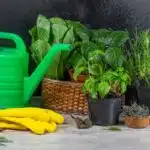Adding oregano to your herb garden is one of the simplest and most rewarding decisions you can make this season. Not only does oregano add a unique flavor to your cooking, it also brings with it a variety of health benefits. Taking care of this fragrant herb is surprisingly easy and taking the time to learn how to grow and care for oregano will bring you plenty of rewards in the form of delicious dishes.
If you’re looking for an herb that’s both flavorful and easy to take care of, then oregano is the perfect choice. Growing, maintaining, and harvesting this herb requires minimal effort yet yields maximum benefits. With a few simple steps, you can transform your garden into a fragrant oasis filled with fresh herbs that you can use in all your culinary creations.
The wonderful thing about growing oregano is that it can be done anywhere; from small balcony gardens or window boxes to larger outdoor spaces. All it takes is some knowledge about how to properly plant and cultivate oregano so that it will thrive in its environment. With just a little bit of guidance, soon enough you’ll have an abundance of this tasty herb ready for use in your favorite recipes!
Choosing The Right Oregano Variety
As one of the most widely used herbs, oregano is a versatile addition to any garden. But how does one choose the right variety for their needs? With so many varieties out there, it can be overwhelming. To make your search easier, let’s take a look at some tips for selecting the perfect oregano for you.
From Greek and Italian varieties to wild marjoram, oregano comes in an array of shapes and sizes. To start your search, ask yourself what flavor profile you desire from this herb – pungent, sweet or savory? Additionally, consider if you want a compact or trailing plant. Knowing what flavor and growth habit you are looking for will help you narrow down the selection process.
Once you have chosen the variety that fits best with your needs, consider where you would like to place it in your garden. Will it receive full sun or partial shade? Different types of oregano may require different amounts of light exposure so be sure to read up on your chosen variety before planting. With these considerations in mind, you’ll be able to find the perfect oregano and ensure its success in your garden.
Planting Oregano
Planting oregano is like building a house; it needs to have the right foundation for success. Preparing the soil and selecting the best spot to plant both contribute to a successful start. It’s important to understand that oregano is a perennial herb, so you’ll want to choose its home carefully.
When planting oregano, ensure that your soil is well-draining and has plenty of organic matter. If your soil is heavy clay or highly alkaline then it will require amendment with sand or compost before planting. Once you have prepared your soil for planting, choose a location with plenty of sun exposure – at least 6 hours per day – as this will help promote strong growth and full flavor development in the leaves.
When ready, plant your oregano in small mounds about 12 inches apart from each other and water deeply after sowing the seeds. You can also opt for setting out seedlings or starter plants instead if desired; make sure not to overcrowd them as this could lead to pest issues down the line. Taking these steps will help ensure that your oregano plants are set up for success as they grow and become established in their new home.
Site Selection For Oregano
Have you ever wondered what it takes to cultivate a thriving oregano plant? While there are many things to consider, the site selection is critical. Let’s explore how to find the perfect spot for your oregano.
When deciding where to plant oregano, you’ll want to choose a location that receives full sun. A sunny spot with at least six hours of direct sunlight will help ensure that your oregano grows robustly and produces its signature flavor. Additionally, be sure to pick a spot with well-draining soil. Oregano does not like soggy roots, so avoid any areas that tend to stay wet or damp for extended periods of time.
If you have access to an outdoor area with plenty of sunlight and good drainage, then you’re all set! If not, you can also grow oregano indoors in pots or containers that provide ample light and good drainage–just make sure they’re large enough as the plants need space to spread out their roots.
Now that we’ve established our ideal oregano site, let’s move on to the next step: soil requirements.
Oregano Soil Requirements
Planting oregano is like playing a game of checkers – it’s easy to learn the basics, but understanding the details will help you win. When it comes to soil requirements for oregano, there are a few things you should keep in mind.
First, oregano likes well-drained soil with a neutral pH level. The best way to achieve this is by mixing compost or peat moss into your soil before planting. This will also help retain moisture and provide essential nutrients to the plant. Additionally, make sure you use a pot with plenty of drainage holes so that the roots won’t get waterlogged and rot away.
Second, oregano needs plenty of sunlight in order to thrive. If you’re planting outdoors, choose an area that gets at least eight hours of sunlight each day. If you’re growing indoors, place your potted plant near a sunny windowsill or invest in grow lights to ensure your plant gets enough light.
Finally, when preparing your soil for planting oregano, mix in some sand or gravel to improve drainage and add organic matter such as aged manure or composted leaves for extra nutrients. By following these simple steps and providing adequate lighting and watering conditions, your oregano plants should be healthy and thriving all year round! With this knowledge as your foundation, you’ll be ready to take on the next step: watering your oregano plants correctly for optimal growth.
Watering Oregano
Have you ever wondered how to properly water oregano plants? Adequate watering is essential for growing and caring for oregano. Let’s find out what it takes to keep your oregano hydrated!
First, you’ll want to make sure that your oregano gets about one inch of water per week. You can manually water the plant, or set up a drip system if you have a larger garden. Water the soil around the plant’s base, making sure not to get too close to the leaves and stems. Additionally, avoid using a powerful sprayer nozzle when watering because it could damage the delicate leaves.
If your climate is especially dry and hot, you may need to water more often than once per week. Check the soil frequently by sticking your finger into it; if it feels dry several inches below the surface, then your oregano needs more water. During winter months when rainfall is low and temperatures are cold, you’ll likely need to supply supplemental irrigation – make sure not to let the soil become overly wet or soggy since this can cause root rot or other diseases in your plants.
With these tips in mind, you should be able to provide enough moisture for your oregano plants so they can thrive! Be mindful of how much and how often you’re watering them in order to ensure their health and growth. Now let’s look at fertilizing oregano – another important step for keeping this herb happy and healthy!
Fertilizing Oregano
Fertilizing oregano is an essential part of caring for this fragrant and delightful herb. Like a bee pollinating a flower, the right fertilizer will help you reap a bountiful harvest. Here are three simple steps to help ensure your oregano grows strong and healthy:
First, be sure to use a slow-release organic fertilizer with plenty of nitrogen and phosphorus. These elements are essential for building up the plant’s root system and foliage, keeping it lush and vibrant throughout the growing season. Second, avoid over-fertilizing oregano; too much fertilizer can damage the delicate roots and leaves, leading to stunted growth or even death. Lastly, keep in mind that oregano is best fertilized during its active growth period – usually late spring or early summer – when it is most likely to respond positively to additional nutrients.
The key to successful fertilization is moderation; too little fertilizer can lead to weak plants, while too much can create more problems than it solves. Finding the right balance of nutrients will help you get the most out of your oregano plants year after year. With careful attention, your oregano will thrive and reward you with beautiful foliage and delicious flavor for years to come!
Now that we’ve discussed fertilizing oregano, let’s take a look at pruning and deadheading – two important techniques for maintaining healthy plants.
Pruning And Deadheading Oregano
When it comes to keeping oregano healthy, pruning and deadheading are essential. Pruning is the act of trimming off dead or weak branches, while deadheading means removing faded flower heads to encourage new blooms. This will help promote new growth and keep your oregano from getting leggy or out of control.
Regularly pruning and deadheading your oregano is important for maintaining its health and vigor. Removing spent flowers will encourage more blooms, which in turn will be attractive to beneficial pollinators like bees and butterflies. Keeping the plant trimmed also prevents it from becoming too tall or sprawling out of its designated area. Taking a few minutes each week to snip away old stems can go a long way in keeping your oregano looking its best!
With regular care and maintenance, your oregano plants will thrive and produce beautiful foliage all season. Next up: controlling pests and diseases that may affect your herbs…
Controlling Pests And Diseases
Pest and disease control is an absolute must for growing oregano, without it, your oregano won’t survive! It’s essential that you take the necessary steps to manage pests and diseases if you want your oregano plants to thrive. There are a few methods that you can use to ensure that your oregano plants stay healthy.
First of all, keep an eye out for common pests like aphids, spider mites, and whiteflies. If you spot any of these critters on your oregano plants, take immediate action by spraying them with insecticidal soap or neem oil solution. You should also consider using floating row covers if the pest problem persists.
Secondly, pay attention to signs of disease such as leaf spots or wilting. If you notice any of these symptoms on your oregano plants, prune away the affected areas and treat them with an appropriate fungicide. You should also take care to avoid overhead watering in order to reduce the chance of fungal infection.
These simple steps will help protect your oregano from pests and diseases so that it can grow strong and healthy for years to come. With proper care and plenty of TLC, your oregano will reward you with delicious herbs all season long! Now let’s move on to harvesting and storing your freshly harvested oregano…
Harvesting And Storing Oregano
Harvesting and storing oregano may seem like a daunting task, but with the right preparation and care, it can be done with ease. On the other hand, failing to take the necessary steps to achieve successful harvesting and storing of this herb can result in its rapid decline. Juxtaposed against this is the fact that when done correctly, it can provide a bounty of flavourful oregano for months on end.
The first step to harvesting and storing oregano is to wait until the plant has grown at least 6 inches tall. This will ensure that there are enough leaves for harvesting without compromising future growth. Once the leaves are ready for harvest, cut them off using scissors near their base and hang them upside down in a well-ventilated area until they dry completely. To speed up the drying process, you can also place them in an oven set to low temperature.
Once your oregano is completely dry, store it in airtight containers or bags and keep it away from direct sunlight or heat sources. This will help preserve the flavor and aroma of your oregano while preventing any mold or mildew from forming due to moisture accumulation. Additionally, you can also freeze your dried oregano by placing it in an airtight container or bag before popping it into the freezer — this will allow you to enjoy its delicious flavor all year round!
With these simple steps, harvesting and storing oregano is made easier than ever before. All that’s left now is getting started on growing your very own oregano in containers!
Growing Oregano In Containers
Do you want to grow oregano in a pot or container? Growing oregano in containers is possible and relatively easy. Whether you’re a beginner looking for an easy herb to grow or an experienced gardener looking for an interesting twist on your oregano plants, here are some tips and tricks to help you get started:
• Selecting the Right Container: When it comes to selecting your container, size matters! For oregano plants, choose a pot that’s at least 12 inches deep and wide. Make sure the container has good drainage holes at the bottom.
• Planting Oregano: Plant oregano in well-draining soil and a sunny spot. Once planted, water thoroughly and keep the soil moist but not soggy.
• Fertilizing Oregano: Fertilize your oregano plants with a balanced fertilizer every two weeks during their active growing season. This will give them the nutrients they need for healthy growth.
These are just some of the basics of growing oregano in containers. With these tips and tricks in mind, you’ll be able to create a thriving and flavorful oregano plant! Now that you know how to get started with growing oregano in containers, let’s move onto companion planting for oregano – another important step for ensuring success.
Companion Planting For Oregano
Companion planting for oregano is a great way to get the most out of your herb garden. Growing plants together that have mutually beneficial relationships can help increase the yield, flavor, and quality of each plant. Here are four tips to consider when companion planting with oregano:
Plant oregano near other herbs such as sage, thyme, or basil to enhance the flavor of all.
Oregano is also beneficial to vegetables like tomatoes and peppers as it helps repel certain pests and diseases that can affect them.
Companion plants that attract pollinators will also be helpful in increasing yields from oregano, such as borage or lavender.
Planting marigolds near oregano can help deter nematodes, which are small worms that feed on roots and cause damage to the plant.
These are just a few examples of how companion planting with oregano can help you maximize your herb garden’s potential and get the best possible results from your plants. By taking advantage of this method, you’ll be able to create an abundant garden full of fragrant herbs and healthy produce. To take it one step further, let’s look at how we can propagate oregano further by taking cuttings...
Propagating Oregano
Propagating oregano is an easy way to ensure you always have plenty of the herb on hand. It’s also one of the most cost effective methods, since you can create new plants from cuttings or seeds. To get started, you’ll need a few supplies like potting soil and a container.
When propagating oregano from seed, sow them directly in the ground or start them indoors in late winter and transfer them outside after the last frost. If you’re using cuttings, wait until early spring for optimal results. Fill your container with potting soil and place your cuttings in it, making sure to keep the soil moist but not soggy.
Once your oregano is established, it’s time to take care of it so that it thrives! Give it plenty of sunshine and water regularly to keep its soil evenly moist. Make sure to prune off any dead leaves or stems as needed and fertilize during active growth periods for best results. With regular care and attention, your oregano will reward you with an abundance of flavorful leaves for years to come.
With these tips in mind, growing oregano indoors is a great way to enjoy all the benefits of this versatile herb even when outdoor conditions are less than ideal.
Growing Oregano Indoors
Growing oregano indoors is a great way to enjoy the herb’s delicious flavor year-round. It’s easy to do and doesn’t require a lot of space. With a few simple steps, you can have fresh oregano anytime you want it!
First, you’ll need to get some oregano seeds or plant cuttings from your local garden center. Make sure to purchase an organic variety if possible as this will give you the best flavor. Plant the seeds or cuttings in well-draining soil, and place the pot in a sunny spot that gets at least six hours of sunlight per day. Water regularly and fertilize every two weeks for optimal growth.
Once your plants are established, prune them often to keep them bushy and healthy. Oregano can easily become woody if left unattended and won’t produce leaves as plentifully as when it’s regularly trimmed back. When harvesting, pick only the top leaves so that new ones can continue to grow in their place.
All that’s left now is to enjoy your homegrown oregano! Add it to your favorite dishes for an extra burst of flavor, or use it for medicinal purposes like treating colds or digestive problems. No matter how you use it, home-grown oregano is sure to bring freshness and flavor into your life! With its easy care requirements, growing oregano indoors is definitely worth trying out! Now let’s move on to exploring different varieties of oregano we can try…
Oregano Varieties To Try
Planting and perusing plenty of oregano varieties can be a pleasurable pursuit! From broad-leaved Greek oregano to curly, compact Italian oregano, there are myriad types to tantalize taste buds and tantalize the senses. So, what’s the best way to explore the world of oregano?
Let’s take a tour through fourteen tempting varieties of oregano for your garden and kitchen. With subtle differences in flavor, texture, and color, you’ll find something special for every season! First on our list is Greek oregano–a large-leafed variety with a strong flavor that pairs well with many Mediterranean dishes. Then there’s Mexican oregano–a spicy type with a hint of citrus as well as an earthy flavor. For a milder option, look no further than Italian oregano–a smaller-leafed variety with a mild yet pleasant bite. Finally, try Cuban oregano–a hardy variety that loves warm climates and has an intense aroma that works great in sauces.
The options don’t stop there! There’s also Spanish thyme, Turkish marjoram and French tarragon all offering their own distinct flavors and aromas. Not to mention perennial favorites like wild marjoram and common thyme boasting unique fragrances for your herb gardens or window boxes. Whatever type you choose, remember that growing oregano requires regular watering (especially during dry spells), regular pruning (to keep it from becoming too woody) and lots of sunshine so it doesn’t get leggy or overwintered indoors.
Oregano Uses
Oregano is a versatile herb that can be used in a variety of ways. It has an earthy flavor that adds depth to many dishes. Not only is it delicious, it also has medicinal values. Here are 15 uses for oregano that you can try:
- Spice up tomato sauces – Oregano adds a burst of flavor to your favorite spaghetti sauce recipe.
- Give salad dressings an Italian flair – A sprinkle of oregano adds zing to any salad dressing or marinade.
- Use as a garnish – Sprinkle chopped oregano leaves over grilled meats or vegetables for an extra hint of flavor and color.
- Make tea with the leaves – Boil a few fresh oregano leaves in water for about five minutes and strain before drinking for a soothing herbal tea with calming effects on the body and mind.
Aside from adding flavor to dishes, oregano is also used medicinally due to its antioxidant properties and anti-inflammatory benefits, making it ideal for treating various ailments like colds, digestion issues, and even skin conditions such as acne and eczema. It can help boost immunity by fighting off bacterial infections, viruses, and fungi while reducing inflammation internally and externally.
Oregano oil is especially beneficial since it contains carvacrol which helps fight off microbes and reduce inflammation more effectively than the leaves alone. The oil can be applied topically as a massage oil or diluted in water for an antiseptic mouthwash or throat gargle solution to relieve symptoms of sore throats and other ailments like candida overgrowth, fungal infections, asthma, allergies, headaches, arthritis pain, muscle aches, digestive discomfort, menstrual cramps etc., effectively providing relief without side effects like some medications do.
This herb truly offers so many therapeutic benefits that make it worth having around in your kitchen pantry or medicine cabinet! With its unique taste and healthful qualities it’s no wonder why oregano has become such a popular ingredient in kitchens all around the world!
Frequently Asked Questions
Is Oregano A Perennial Or An Annual?
Oregano is a herbaceous perennial, but it can also be grown as an annual in colder climates. Its botanical name is Origanum vulgare, and it has a strong flavor that makes it popular for use in Italian dishes.
This plant grows best in sunny locations with well-drained soil. It will tolerate some shade and does not need to be fertilized frequently. In addition, oregano can be propagated by division or cuttings and requires minimal maintenance to keep thriving.
For those living in colder climates, oregano can still be grown during the summer months as an annual crop. To do this, seeds should be sown directly into the garden after the last frost date has passed for your area. Once established, plants should be watered regularly to ensure healthy growth.
TIP: Make sure to space plants at least 12 inches apart when growing oregano outdoors so that they are not overcrowded and have ample room to spread out.
Can I Use Oregano As A Ground Cover?
Do you have a garden and would like to add some oregano for a natural ground cover? Well, you’re in luck. Oregano is an ideal choice for creating a lush and fragrant ground cover.
Surprisingly, oregano is a perennial herb that can be used as a ground cover with the right care. It has deep roots that help it thrive in sunny and dry climates, making it perfect for outdoor gardens. It also grows quickly, so you won’t have to wait long for it to fill up your garden.
Caring for oregano as a ground cover is easy; all it needs is plenty of sun and well-drained soil. Additionally, trimming back the leaves regularly will help keep the plant healthy and encourage new growth. With these simple steps, you can create an attractive and aromatic ground cover with oregano!
How Often Should I Water Oregano?
Wow! Taking care of oregano is like a dream come true! Anyone who loves gardening will find this herb to be an absolute delight. With its fragrant aroma and brilliant flavor, it’s sure to make any meal a memorable one. But how often should you water oregano? Let’s find out.
Watering oregano plants can be tricky, but it doesn’t have to be. Generally speaking, the soil around your oregano should remain moist but not soggy – think of Goldilocks and her porridge! You’ll want to water your oregano every few days or so during the summer months, and less frequently during winter months when the plant isn’t actively growing. Be sure to check the soil moisture before watering; if it’s still damp, no need for more water just yet!
The key is to find a balance between too much and too little water for your oregano plant. Too much water can cause root rot, while too little can stunt growth or even kill the plant altogether. Make sure you’re familiar with how often your particular type of oregano needs watered so that you can give it the best possible care!
If you follow these simple tips on watering your oregano, then you’ll soon have a thriving plant that will bring flavor and beauty into any dish or garden. All that’s left is for you to enjoy – happy gardening!
What Is The Best Time Of The Year To Harvest Oregano?
Harvesting oregano is a rewarding experience that can bring out the gardener in all of us. It’s like uncovering a hidden treasure! Just when you think you can’t wait any longer, it’s time to pull up your plants and start harvesting. But, when is the best time to harvest oregano?
Well, let me tell you an allegory about two farmers who learned this lesson the hard way.
Once upon a time there were two farmers who planted oregano in their vegetable gardens. Farmer Joe wanted to harvest his oregano as soon as possible, so he pulled up his plants early in the season. However, he was disappointed with the results because his oregano had not yet developed its full flavor.
Farmer Jane waited until mid-summer before she harvested her oregano plants. She was delighted with the outcome because her oregano was strong and flavorful! This was a valuable lesson for both of them – it’s best to wait until mid-summer before harvesting your oregano plants for maximum flavor and scent.
Here are five tips for harvesting your own oregano: • Wait until mid-summer before pulling up your plants • Cut off stems at least 6 inches long • Remove any dead or diseased leaves from the stems • Rinse each stem before drying to remove dirt and other debris • Hang each stem upside down in a dry area with good air circulation
Harvesting your own oregano will give you access to the freshest herbs available while also providing you with a sense of pride and accomplishment knowing that you grew them yourself. With these tips in mind, get ready to enjoy delicious recipes made with fresh herbs right from your garden!
How Do I Know When My Oregano Is Ready To Be Harvested?
Harvesting oregano is a rewarding experience, as it allows you to enjoy the full flavor of this fragrant herb. Knowing when your oregano is ready for harvest can be tricky, but with the right tips and tricks, you’ll be able to tell when it’s time to reap the rewards.
The best time to harvest your oregano is when the flower buds are still in their early stages. This can range anywhere from late spring to mid-summer, depending on where you live and how much sun your oregano gets. The leaves should also have a good amount of color and be full-sized before they are harvested. Once they start flowering, it’s time to pick them!
To make sure that your oregano has reached its peak flavor, give it a taste test before harvesting. If the leaves are soft and aromatic with a slight spicy flavor, then it’s ready for harvest! Be sure not to overharvest as this can reduce the plant’s ability to produce new growth. Instead, only take what you need for immediate use and leave some of the leaves behind so that your plant continues to grow strong and healthy. With these tips in mind, you can ensure that your oregano crop will be flavorful and abundant for years to come!
Conclusion
In conclusion, oregano is a versatile herb that can easily be grown in home gardens. With proper care and maintenance, it can provide a tasty addition to many dishes for years to come. When it comes to growing oregano, there are several things to consider such as whether it is an annual or perennial, when to water it, and when to harvest it. Furthermore, knowing how to use oregano as a ground cover can help maximize its use in the garden.
When growing oregano at home, remember that it needs plenty of sun and well-draining soil. It should also be watered regularly and harvested when the leaves are at their peak flavor. By following these tips and caring for your plants properly, you can enjoy the fresh taste of oregano all year round.
Finally, with a little effort and knowledge you can have a thriving oregano plant in your garden. So why not give it a try? Who knows – you might just find yourself enjoying delicious oregano dishes for years to come!





























